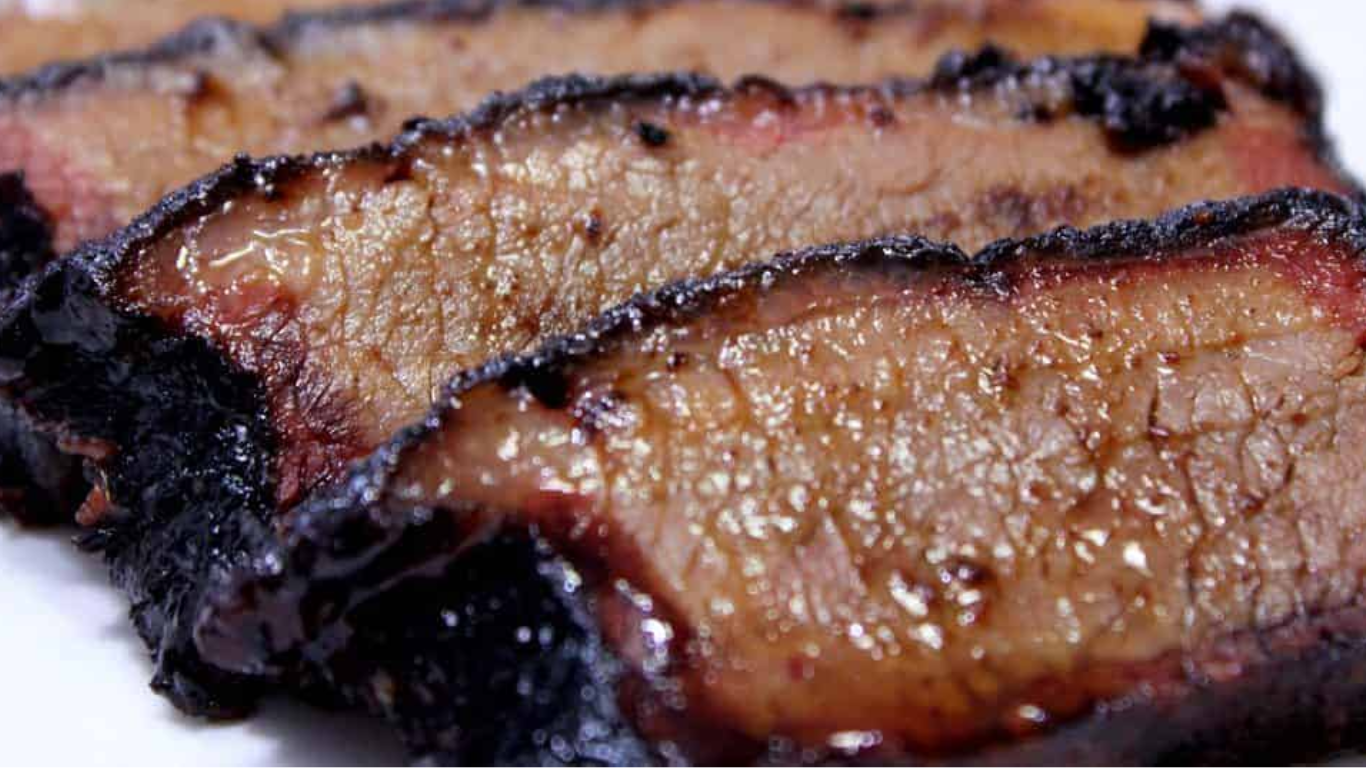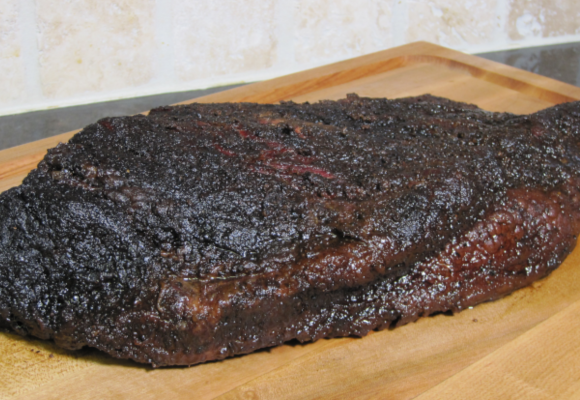The experience of eating smoked meat is one that many people relish, enjoying the deep, rich flavors that smoking imparts to everything from ribs and brisket to poultry and fish.
However, the aftermath of such a meal dish can sometimes be less than pleasant for some individuals, manifesting in the form of burping or belching. If you’ve ever found yourself wondering why this happens, you’re not alone.
Understanding why smoked meat might cause you to burp involves a multi-faceted approach that takes into account both physiological and culinary aspects.
The goal is to provide a comprehensive view that allows you to make informed choices about your diet and better appreciate the nuances of smoked foods.

So whether you are an avid fan of smoked delicacies looking to understand your body’s responses, or you’re simply curious about the mechanics behind this common digestive occurrence, this article promises to be an enlightening read.
Why Does Smoked Meat Make Me Burp? Reasons
The phenomenon of burping after consuming smoked meat could be attributed to several factors. While each individual’s digestive system is unique, some general explanations might shed light on why this occurs.
High Fat Content
Smoked meats like brisket, ribs, and sausages are typically rich in fats, which are an integral part of their flavor profile. However, fats are known to take longer to digest compared to carbohydrates and proteins.
This prolonged digestion time means that the stomach needs to produce more gastric acid to break down the fats. Excess gastric acid can contribute to gas formation, leading to belching as a means of expelling this excess air.
It’s also worth mentioning that the slow digestion of fats can keep the stomach full for extended periods, which can further contribute to the accumulation of gastric gases.
Those who have issues with gallbladder function or have a sensitivity to fatty foods might experience this phenomenon more frequently.
Protein Digestion
Meat is an excellent source of protein, and proteins are made up of amino acids. When protein gets broken down in the stomach and the small intestine, various enzymes and stomach acids are at work.
During this process, gases like nitrogen and carbon dioxide can be produced as byproducts. These gases accumulate in the digestive system, leading to the natural bodily response of burping to relieve pressure.
Furthermore, if proteins are not adequately digested, they can ferment in the gut, producing additional gases that contribute to burping.
Salt and Preservatives
The process of smoking meat often involves using a significant amount of salt for both flavor and preservation.
Salt can lead to water retention and a feeling of bloating, both of which might contribute to increased burping.
Preservatives like sodium nitrate, commonly used in smoked and cured meats, can also cause a build-up of gas in some people.
Overconsumption of salt and preservatives can aggravate this phenomenon, making it a noteworthy factor to consider if you’re experiencing frequent burping after consuming smoked meat.
Eating Habits
The process of smoking meat often involves using a significant amount of salt for both flavor and preservation. Salt can lead to water retention and a feeling of bloating, both of which might contribute to increased burping.
Preservatives like sodium nitrate, commonly used in smoked and cured meats, can also cause a build-up of gas in some people.
Over consumption of salt and preservatives can aggravate this phenomenon, making it a noteworthy factor to consider if you’re experiencing frequent burping after consuming smoked meat.
Beverages
Smoked meats are often paired with carbonated beverages like beer or soda. The carbon dioxide in these beverages contributes to gas build-up in the stomach.
This is another factor that can lead to increased burping, particularly if the beverages are consumed quickly or in large quantities. Even non-carbonated beverages, when consumed quickly, can contribute to swallowing air, adding another layer to the issue.
Individual Sensitivity
Finally, individual digestive systems react differently to various foods. Some people have a more sensitive gastrointestinal tract that might react more strongly to smoked meats, fats, or preservatives.
Certain conditions like irritable bowel syndrome (IBS) or gastroesophageal reflux disease (GERD) could make someone more susceptible to burping after eating specific types of food, including smoked meat.
Understanding these factors in depth can help you pinpoint the potential reasons why smoked meat may cause you to burp. If this is a recurrent issue, consider consulting a healthcare professional for a personalized diagnosis and management plan.
What Makes Smoked Meat Different?
Smoked meat holds a unique place in the culinary world due to its distinct flavors, texture, and preparation methods. Let’s explore these characteristics in detail to better understand what sets smoked meat apart from other forms of cooked meat.

Flavor Complexity
One of the most distinguishing features of smoked meat is its complex flavor profile. The process of smoking adds layers of taste that are difficult to replicate through other cooking methods.
Hardwoods like hickory, apple, or mesquite are often used in the smoking process, and each wood type offers its own unique flavor notes.
For example, hickory tends to give a strong, bacon-like flavor, while applewood provides a milder, fruity touch. These flavors penetrate deep into the meat during the prolonged smoking process, making each bite an experience of nuanced tastes and aromas.
Texture and Tenderness
Another compelling aspect of smoked meat is its texture. The slow-cooking process that is inherent to smoking allows the meat’s connective tissues to break down over time, which leads to incredibly tender results.
This makes smoking ideal for tougher cuts of meat that benefit from long, slow cooking. Whether it’s a brisket, pork shoulder, or even ribs, the end product is often so tender that it practically falls apart, offering a mouthfeel that is difficult to achieve through quicker cooking methods like grilling or frying.
Color and Appearance
The smoking process also imparts a distinctive color to the meat. As the meat absorbs the smoke, a “smoke ring” often forms, giving the outer layer a pink or reddish hue.
This is not just eye-catching but is often considered a sign of well-smoked meat by aficionados. Additionally, the exterior of the meat usually develops a crust known as “bark,” which is rich in flavor and offers a delightful contrast to the tender interior.
Preservation Benefits
Historically, smoking was not just about flavor or texture; it was also a preservation method. Smoking has the ability to extend the shelf life of meat by reducing its moisture content and introducing antimicrobial agents from the smoke.
While refrigeration has reduced the need for smoking as a preservation technique, the long-lasting quality of smoked meat remains a benefit, especially for those looking to store it for extended periods.
Cultural and Regional Variations
Smoked meat is more than just a cooking method; it’s a culinary tradition that varies significantly from region to region. Whether it’s the spicy jerk smoked meats of the Caribbean, the applewood-smoked hams of the American South, or the complex, multi-day smoked fish traditions of Scandinavia, each culture brings its own techniques, flavors, and rituals to smoking.
This adds an additional layer of depth to the experience of enjoying smoked meat, as each regional style offers its own unique take on this age-old culinary art.
Versatility in Cooking
The process of smoking meat is incredibly versatile and can be adapted in various ways to suit individual preferences. Whether it’s cold smoking to add subtle flavor notes or hot smoking to fully cook and flavor the meat, the possibilities are numerous. Many chefs and home cooks experiment with different types of wood, herbs, and spices in the smoking process to create signature flavors.
In essence, smoked meat is an intricate interplay of science and art. From the selection of wood and meat to the careful control of temperature and time, each step contributes to the final product. When done right, smoked meat offers a gastronomic experience that is rich in tradition, flavor, and sensory delight.

